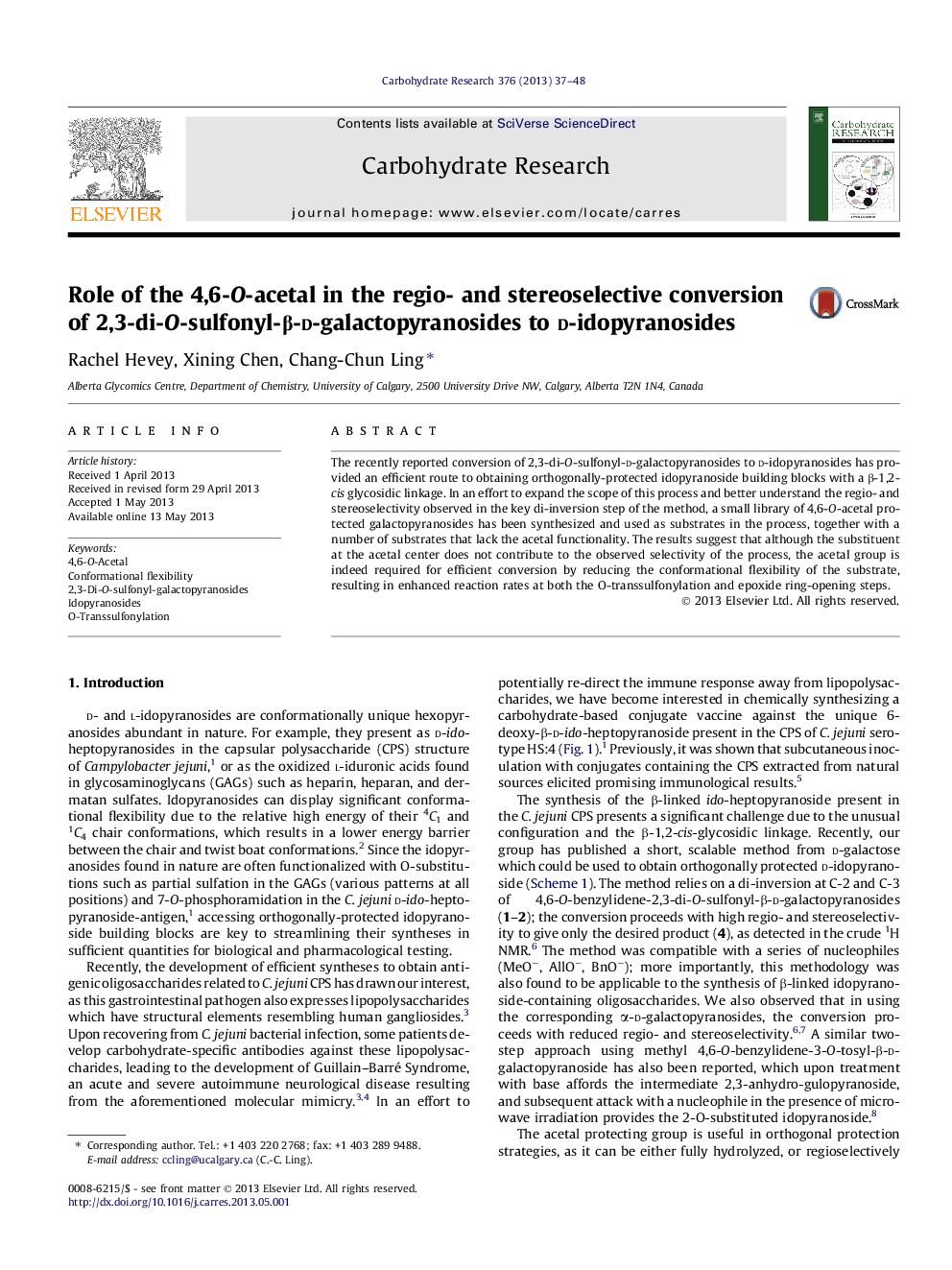| کد مقاله | کد نشریه | سال انتشار | مقاله انگلیسی | نسخه تمام متن |
|---|---|---|---|---|
| 1388724 | 1500875 | 2013 | 12 صفحه PDF | دانلود رایگان |

• The role of the 4,6-O-acetal group was studied for the conversion of galactosides to idosides.
• The substituent at the acetal center does not contribute to the observed selectivity.
• However, the acetal group is required for limiting conformational flexibility of the substrates.
• The acetal group enhances rates at both the O-transsulfonylation and epoxide-opening steps.
The recently reported conversion of 2,3-di-O-sulfonyl-d-galactopyranosides to d-idopyranosides has provided an efficient route to obtaining orthogonally-protected idopyranoside building blocks with a β-1,2-cis glycosidic linkage. In an effort to expand the scope of this process and better understand the regio- and stereoselectivity observed in the key di-inversion step of the method, a small library of 4,6-O-acetal protected galactopyranosides has been synthesized and used as substrates in the process, together with a number of substrates that lack the acetal functionality. The results suggest that although the substituent at the acetal center does not contribute to the observed selectivity of the process, the acetal group is indeed required for efficient conversion by reducing the conformational flexibility of the substrate, resulting in enhanced reaction rates at both the O-transsulfonylation and epoxide ring-opening steps.
Figure optionsDownload as PowerPoint slide
Journal: Carbohydrate Research - Volume 376, 19 July 2013, Pages 37–48